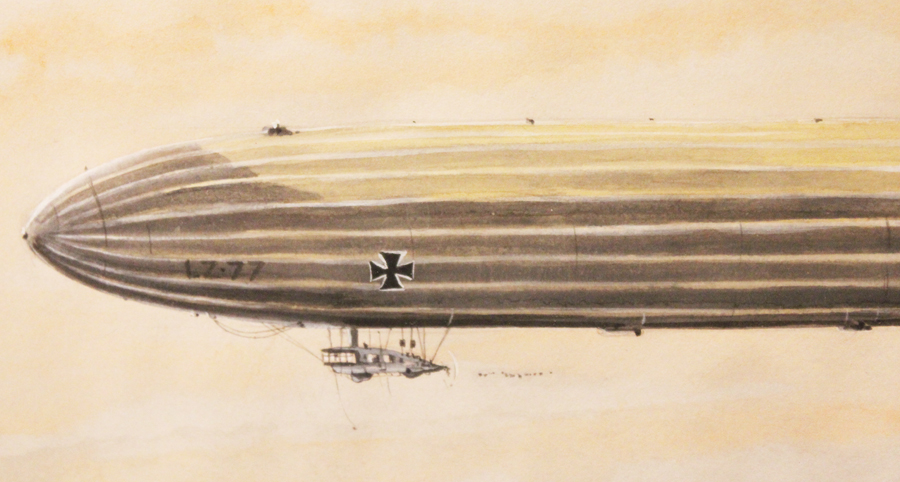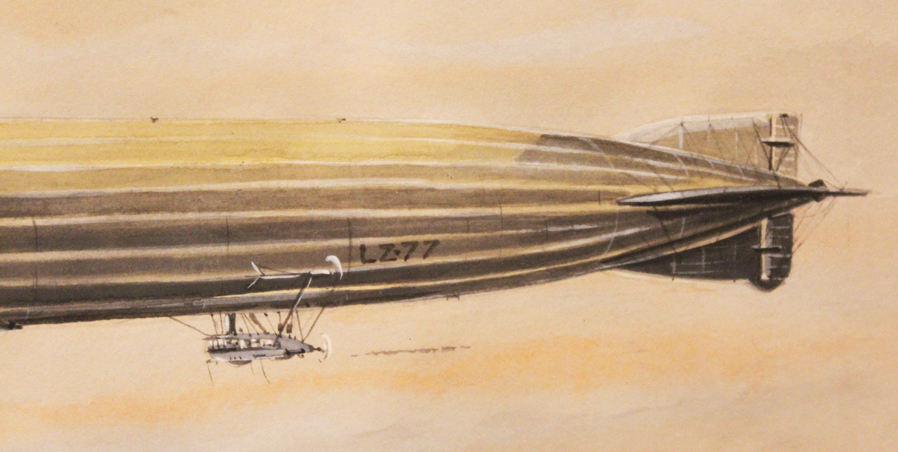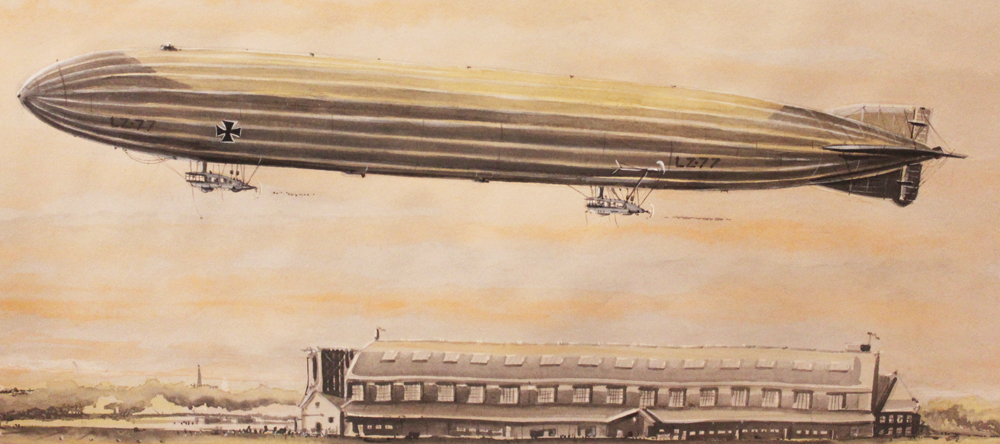Watercolour, Zeppelin LZ 47 Tactical No LZ 77 Bodensee by Manfred Hassel
Signed and In super condition. Mounted on card. An original early Aeronautical watercolour of WW1 beautifully executed. Attacks on England and France dropping a total of 12,610 kg (27,800 lb) of bombs. Destroyed by enemy fire on 21 February 1916 in the Battle of Verdun, killing the crew of 15. Reports at the time indicated LZ 77 had searchlights, eight machine guns, two so-called 'revolver' guns in the top lookout post, was accompanied by fixed-wing aircraft and at least one other Zeppelin and had orders to bomb the nearby railway lines. P Class Zeppelin Airships LZ 47 (LZ 77) and LZ 49 (LZ 79) were deployed to Namur in order to carry out bombing raid on Paris. LZ 49 (LZ 79) bombed Paris on the 29/30 of January, but was damaged by ground fire and was destroyed in a forced landing at Ath in Belgium. The Army Zeppelins were then used to support the German army in the early phases of the battle of Verdun. On 21 February, the first day of the German offensive, four of the six available Zeppelins set out to bomb the French supply lines. LZ 65 (LZ 95), the first Q class Zeppelin, was badly damaged by anti-aircraft fire and was destroyed in a crash landing at the base in Namur. The P class LZ 47 (LZ 77) was hit by anti-aircraft fire over Revigny, catching fire and killing the crew of 11, and LZ 58 (LZ 88) was forced to return to its base by squalls and snow showers. The P class was an enlarged version of the preceding M class. On 5 August 1914 the Zeppelin company put forward a proposal to the German Navy Ministry for a design based on LZ 26. This had been started as a passenger carrying craft for DELAG and was the first Zeppelin with a duralumin framework, and also had the strengthening keel inside the hull structure. The proposed design was larger, with the volume increased from 25,000 m3 (880,000 cu ft) to 31,900 m3 (1,126,000 cu ft) and a fourth engine was added. As well as being larger, allowing a greater range and bomb load, the P class introduced enclosed crew accommodation. The Zeppelin P Class was the first Zeppelin airship type to be produced in quantity after the outbreak of the First World War. 22 of the type were built as well as 12 of a lengthened version, the Q Class . They were used for many of the airship bombing raids on the United Kingdom in 1915-16, for naval patrol work over the North Sea and Baltic and were also deployed on the eastern and south-eastern fronts. Painting front size 16.25 x 9 inches
Code: 20920





